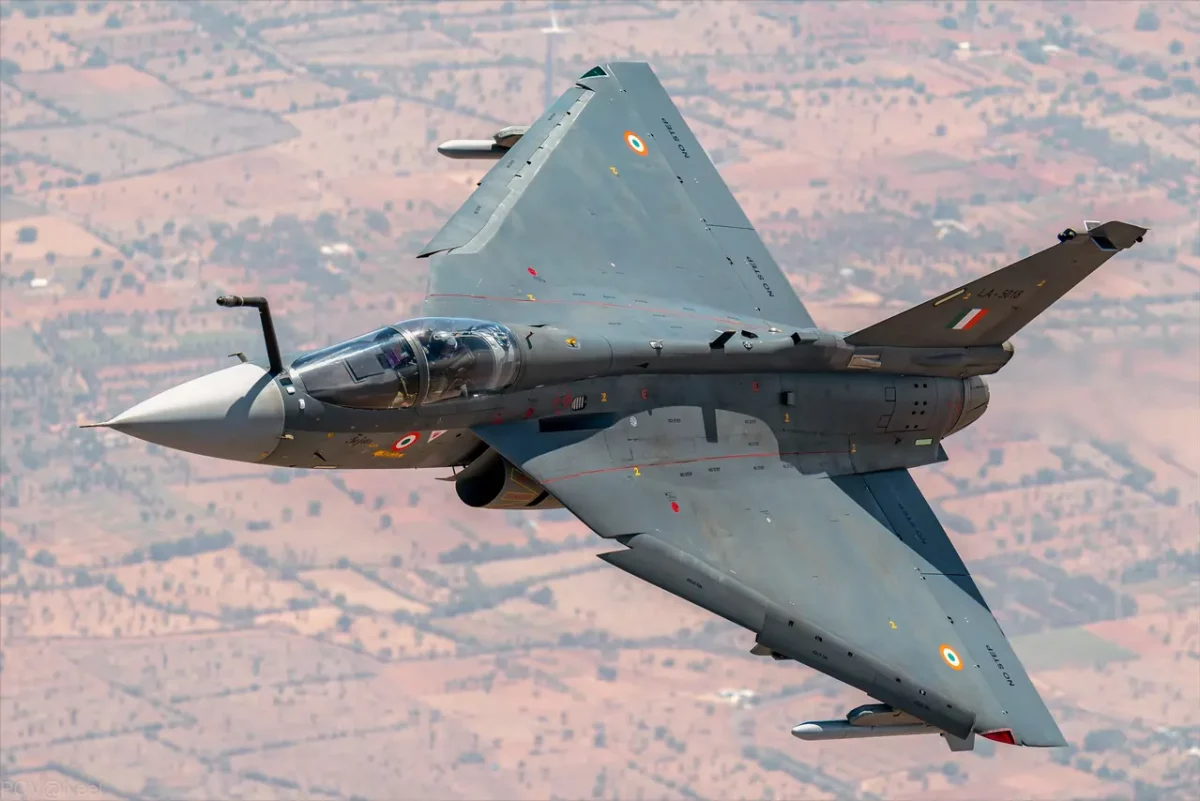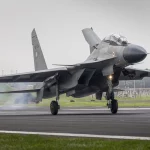In a major technological breakthrough for India’s defence aviation, the Defence Research and Development Organisation (DRDO) has begun flight trials of the advanced Electronic Warfare (EW) suite ‘Swayam Raksha Kavach’ on the TEJAS MK-1A Light Combat Aircraft, effectively making it India’s first stealth-capable indigenous fighter.
The new system — which translates to Self-Defence Shield — is designed to make the TEJAS MK-1A nearly undetectable to enemy radars and highly resistant to missile and electronic threats. Developed indigenously, this upgrade provides the IAF’s frontline fighters with a functional stealth capability years before the fifth-generation Advanced Medium Combat Aircraft (AMCA) enters service.
Manufactured by Hindustan Aeronautics Limited (HAL), the TEJAS MK-1A is already India’s most sophisticated operational indigenous fighter. The integration of Swayam Raksha Kavach now places it in a higher league — boosting survivability, mission efficiency, and electronic dominance in contested airspace.
The system features two primary components:
- A Radar Warning Receiver (RWR) that instantly detects and alerts pilots when hostile radar systems track the aircraft, allowing immediate evasive action.
- An Advanced Self-Protection Jammer (ASPJ) based on Digital Radio Frequency Memory (DRFM) technology, capable of generating deceptive signals and jamming waveforms that confuse enemy radar and missile systems.
Together, these technologies drastically reduce the fighter’s radar cross-section, offering a form of “electronic stealth” that complements — rather than replaces — physical stealth design. Unlike stealth aircraft that rely on airframe shaping or radar-absorbent coatings, Swayam Raksha Kavach achieves a dynamic stealth effect by electronically deceiving enemy sensors in real time.
According to DRDO sources, the system’s production began in 2021 at the Centre for Airborne Systems (CABS) in Bengaluru. With flight validations now underway, full operational induction is targeted for 2026, a timeline that will make TEJAS MK-1A the most advanced indigenous combat jet ever fielded by the Indian Air Force.
The integration also includes cockpit upgrades and new avionics designed to synchronize threat detection, countermeasure deployment, and pilot awareness in one adaptive system — marking a major step towards cognitive electronic warfare capabilities.
In September 2025, HAL received government approval for 97 additional TEJAS MK-1A aircraft, including 68 single-seat and 29 twin-seat variants. These upcoming jets are expected to roll out with factory-fitted Swayam Raksha Kavach systems, ensuring that future IAF squadrons are combat-ready for the electronic battlespace.
Defence analysts note that the move bridges India’s technological gap until AMCA’s arrival and showcases the nation’s growing confidence in homegrown aerospace solutions. The development also places India among a select group of countries capable of integrating adaptive electronic warfare suites with indigenous fighter platforms.
With Swayam Raksha Kavach, India’s TEJAS MK-1A gains not only enhanced survivability but also the credibility of being a truly modern, stealth-enabled multirole fighter — a symbol of India’s advancing self-reliance in defence technology.













